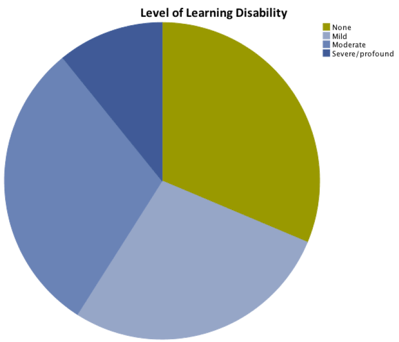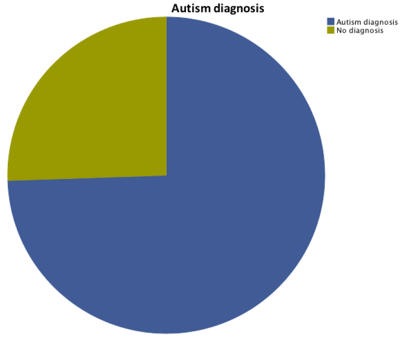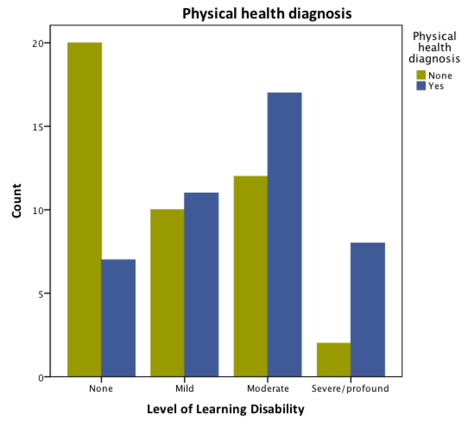Child and Adolescent Mental Health Services: inpatient report
A report recommending improvements to respond better to the needs of children and young people with Learning Disability (LD) and/or autism.
A4.3 Diagnoses
Diagnoses – summary
30% of patients had no learning disability, 30% had mild learning disability, 30% had moderate learning disability, 10% had severe/profound learning disability
75% had autism spectrum disorder, including 100% of those with no learning disability, 52% of those with mild learning disability, 73% of those with moderate learning disability and , 90% of those with severe/profound learning disability
Multiple co-morbidities were common. Additional psychiatric diagnoses included:
- Affective disorder (24%)
- Anxiety and trauma related disorder (23%)
- Psychosis (21%)
- ADHD (15%)
- Other developmental disorders (6%)
- Other additional psychiatric diagnoses (13%)
50% had additional physical health diagnoses, 15% having multiple physical diagnoses, the number of which increased with severity of learning disability.
A4.3.1 Level of Learning Disability (all patients)

A4.3.2 Autism spectrum disorder diagnosis
Of all patients in the study, 75 per cent had an autism spectrum disorder diagnosis

By definition, due to the inclusion criteria of the study, all of those without learning disability had autism spectrum disorder. For those with learning disability, the greater the severity of the learning disability, the more likely the person was to have an autism spectrum disorder diagnosis:
- Mild learning disability – 52% had autism spectrum disorder
- Moderate learning disability – 73% had autism spectrum disorder
- Severe/profound learning disability – 90% had autism spectrum disorder
A4.3.3 Additional psychiatric diagnoses
% of patients of varying levels of learning disability reported as having additional psychiatric disorders are given in the table below.
| Level of learning disability | None | Mild | Moderate | Severe/profound | All patient |
|---|---|---|---|---|---|
| Affective disorders | 30 | 20 | 30 | 20 | 24 |
| Anxiety and trauma related disorders | 24 | 32 | 23 | 0 | 23 |
| Psychosis | 28 | 16 | 16 | 20 | 21 |
| ADHD | 7 | 28 | 12 | 0 | 15 |
Note: Some of those with more severe levels of learning disability were reported as having hyperkinesis but not a formal ADHD diagnosis.
Other developmental disorders contributing to presentation were reported to be present in 6% of all patients. Numbers were too small for meaningful comparison between those of varying levels of learning disability. Other additional psychiatric diagnoses were reported to be present in 13% of all patients.
A4.3.4 Physical health diagnoses
Other physical health diagnoses were present in 51% of patients. 15% had multiple physical health diagnoses.
One or more additional physical health diagnosis was increasingly noted to be present as the severity of the person's learning disability increased.

Contact
There is a problem
Thanks for your feedback